Table of contents
White rice flour ( organic?) is produced by grinding raw white rice and is considered a staple food in Southeast Asia. Rice flour is gluten-free and is therefore a good substitute product for people with gluten intolerance (gluten sensitivity, celiac disease).
Using rice flour in the kitchen:
What is rice flour? Rice flour (raw) is usually made from long-grain rice, but sticky rice or short-grain rice can also be used for production. Rice flour is much finer and powderier than wheat flour and has hardly any taste of its own.
What do you need rice flour for? Due to its high starch content, rice flour is particularly suitable for thickening and binding soups, sauces, desserts and for making chocolates. It is a good alternative to conventional corn starch 1 or to pure rice starch ( Amylum Oryzae, see General Information).
Rice flour is also used in Asian sweets. In Korea, rice cakes are made from white rice flour, in Thailand it is used to make spicy or sweet rice balls, and in Japan, traditional mochi (rice cakes in bar or ball shape) are made using rice flour.
Can you use rice flour like normal flour? Since rice flour is gluten-free, people with celiac disease can use it as an alternative to grains containing gluten. Despite its limited baking properties, rice flour can be used to bake bread. However, you should always combine another type of gluten-free flour with rice flour, otherwise the bread will not rise well when baked. Flour made from quinoa, millet or amaranth is suitable for this. 2 If you use rice flour 1:1 as an alternative to conventional grain flour, you are more likely to get flatbreads.
Other uses for white rice flour include pancakes, noodles, cakes, edible paper and tempura. Raw rice flour is used as an extender in the meat industry and as a stabilizer in drinks and liquid foods.
Vegan recipe for pancakes with white rice flour:
Ingredients (for 2 people): 200 g rice flour, 200 g buckwheat flour, 2 tsp baking powder, 400 ml unsweetened apple juice, 400 ml plant-based milk ( oat milk, soy milk), 2 tbsp birch sugar or brown sugar, 1 tsp psyllium husks.
Preparation: First, mix the rice flour, psyllium husks and baking powder in a bowl. Now add the remaining ingredients and mix everything with a hand mixer until you have a smooth dough. Next, heat oil in a pan. For one pancake, use about a ladle of batter. Fry the pancakes on both sides until they are golden brown. Serve the warm pancakes with a little powdered sugar and fresh fruit or apple sauce and cinnamon.
Vegan recipe for gluten-free rice flour bread:
Ingredients: 450 g lukewarm water, 1 packet ofdry yeast (approx. 8 g), 1 tbsp rice syrup (alternatively honey), 450 g rice flour (white, raw, organic), 50 g rice starch, 10 g guar gum, 3 tbsp rapeseed oil, 1 tsp salt.
Preparation: Mix the water and yeast in a bowl, and in another bowl mix the salt and dry ingredients well. Now add the flour mixture to the water and yeast mixture and knead it well, e.g. with a food processor or with a dough hook on a hand mixer. After adding the oil and rice syrup, knead the dough again until it is smooth. Put the dough in a greased baking tin (e.g. loaf tin) and place it in a warm place. After 30-40 minutes, the dough has risen and you can bake the bread in a preheated oven at 180 °C (top and bottom heat) for approx. 60 minutes.
Vegan recipes with white rice flour can be found under the note: " Recipes that use the most of this ingredient ".
| Not only vegans or vegetarians should read this: Vegans often eat unhealthily. Avoidable nutritional errors. |
Shopping - where to buy rice flour?
Rice flour can be found in Asian specialty shops and Turkish grocery stores, among others. Some supermarkets and large retailers such as Coop and Migros, Rewe and Volg (Zwicky) also sell pure rice flour. More and more supermarkets are selling gluten-free products and flour mixes that also contain rice flour. Gluten-free own brands are now available at Spar, Lidl, Aldi, Hofer and Edeka. At Denner, such products are sometimes shown as special offers, but are not usually included in the standard range. Various online retailers also have different types of rice flour on their websites, often organic ones too.
When buying rice flour, it is advisable to look for organic quality, as pesticides are used in conventional farming. Organic rice flour is available in health food stores, drugstores, organic shops and organic supermarkets ( Denn's Biomarkt and Alnatura). You should also make sure that the packaging is intact to minimize the chances of pest infestation.
Making your own rice flour:
Can you make rice flour yourself? Rice flour is easy to make at home. This has the advantage that you can prepare it fresh at any time and are very flexible in terms of the amount of flour.
Ideally, you should use a small grain mill with a natural stone grinder to make flour. Since rice is much harder than other types of grain, the mill should be able to grind the grains very finely. Otherwise, the rice flour will end up being rather crumbly. If you don't have a grain mill to hand, you can alternatively use a coffee grinder with a good grinder, a kitchen aid with a beater or grinder (such as Thermomix, Monsieur Cuisine, etc.) or a hand blender. When using a hand blender, you should put small amounts of rice into the blender, otherwise it could clog up. Then pack the finished rice flour in an airtight container and store it in a cool place. 3
Storage of rice flour:
Rice flour should always be stored in an airtight, dry and dark place. Do not store rice flour near odorous foods such as coffee, tea and spices, as it could absorb their odor.
After purchasing the rice flour, remove it from its original packaging and store it in storage jars, for example, so that the harmful substances contained in the packaging materials cannot penetrate into the rice flour. Check that the original packaging is intact to make sure that no pests, such as the rice flour beetle, have settled in the rice flour.
The rice flour beetle, which originates from Asia, has now also settled in Europe. The beetles are most commonly found in bakeries and mills, but they can also appear in your own home if you buy contaminated products. Infested food must be disposed of immediately to prevent the animals from spreading. Rice flour beetles feed not only on rice products, but also on other grain products, dried fruit and nuts. Infested flour can be recognized by the fact that it changes color and smells. Since the beetles and larvae are very sensitive to cold, you should store rice flour at temperatures below 20 °C if possible. 6
Rice flour ingredients - nutritional values - calories:
100 g of raw rice flour contains 366 kcal, which primarily come from carbohydrates. Since the gluten-free flour is made from white, i.e. peeled, rice grains, the fiber content is lower than in brown rice flour, which is made from whole grain rice. With 6 g of protein, white rice flour has less protein than corn flour (8.7 g) and wheat flour (12 g). Rice flour is also rather low in protein compared to other types of flour such as lupine flour (38 g) or coconut flour (21 g). The flour is very low in fat with a fat content of 1.4 g/100g. 7
The manganese content in white rice flour is high at 1.2 mg/100g. This covers 60% of the daily manganese requirement. Pistachios, spelt flour and raw chickpeas achieve comparable values (2 mg/100g). Wheat germ, on the other hand, contains significantly more (13.3 mg/100g). 7 The human body needs manganese for its carbohydrate metabolism, its urinary cycle and for the formation of cartilage tissue, among other things. 8
The 0.44 mg of vitamin B6 (pyridoxine) contained in 100 g covers 31% of the daily human requirement. A similar amount is contained in corn kernels and cashews. Sunflower seeds (1.3 mg) and wheat bran (1.3 mg) have a significantly higher proportion of vitamin B 6. 7 Pyridoxine is involved in around 100 enzymatic reactions in the human body and plays an important role in protein metabolism. 9
The amount of selenium in an intake of 100 g of white rice flour (and a daily requirement of around 2000 kcal) accounts for around 27% of the daily requirement. The amount of 15 µg/100g can be compared to short grain rice and unsweetened cocoa powder. Chia seeds (55.2 µg/100g) and barley groats (37.7 µg/100g) contain a lot of the semi-metal. 7 The human body needs selenium for its thyroid metabolism, its immune system and its antioxidant protection system, among other things. 10,11
The complete ingredients of rice flour, the coverage of the daily requirement and comparison values with other ingredients can be found in our nutrient tables. In the article Nutrients explained you will get a detailed insight into the topic.
Health aspects - effects:
How healthy is rice flour? White, raw rice flour is very low in fat and filling. However, it contains significantly fewer vitamins and minerals than brown wholegrain rice flour, because most of the vital substances are in the silver skin that surrounds the rice grain. This is no longer present in white rice flour because it is ground down before the milling process.
Rice flour is gluten-free. We recommend that people with gluten intolerance or celiac disease look for a note for gluten-free foods when shopping (e.g. symbol with the crossed-out ear of corn), because traces of gluten can occur when processing with the same machines as for grains.
Dangers - Intolerances - Side effects:
White rice flour has a very high glycemic index and therefore leads to a rapid increase in blood sugar levels. If white rice is consumed frequently and regularly, the risk of developing type 2 diabetes increases. The effect is similar to that of white flour and industrial sugar. 12
Rice and the rice flour made from it are often heavily contaminated with arsenic and cadmium due to the use of fertilizers and pesticides in many rice-growing countries. The rice absorbs the toxins via the contaminated water. Although rice flour is considered to be very digestible, it should only be consumed in moderate amounts. Small children in particular absorb arsenic more easily than adults, which is why children under 3 years of age should not be given too many rice products. 17,18 If possible, buy organic rice flour, as organic rice cultivation does not involve the additional use of pesticides. 13
Folk medicine - natural healing:
In traditional Chinese medicine ( TCM), rice is considered an ancient remedy. It is said to promote digestion, lower blood pressure, relieve the heart and dehydrate the body. Rice flour does not differ greatly from unmilled white rice grains in terms of its nutritional value.
Red rice flour is a specialty. It has been used successfully in traditional Chinese medicine since the 16th century. To produce it, cooked white rice is mixed with the yeast Monascus purpureus, which causes the rice grain to ferment. The yeast not only gives the formerly white rice its red color, but also produces monacolins (monacolin K), bioflavonoids, unsaturated fatty acids and amino acids. Red rice flour is said to lower cholesterol levels. 14
Occurrence - Origin:
Rice flour is used in many dishes, especially in Asia, because that is where the white flour originally comes from. In Southeast Asia it is even considered a staple food. Slowly but surely, the flour can also be found in European kitchens, as it is a good alternative to grains containing gluten and has many uses.
Industrial production of white rice flour:
Is rice flour and glutinous rice flour the same thing? If you compare the labels of rice flour and glutinous rice flour, you will see that different types of rice are used in their production. For white rice flour, the industry often uses white broken rice from long grain rice. Glutinous rice flour, on the other hand, is made from the white glutinous rice of the same name.
There are various methods for producing rice flour. The most traditional but most complex method is so-called "wet grinding ". This involves soaking the rice grains in water for at least 8 hours and then grinding them together with the water in a stone mill to form a pulp. The pulp is filtered and left to dry overnight. The rice is ground again the next day. The resulting rice flour is very fine and still contains a lot of starch due to the gentle grinding process.
In addition to wet grinding, there is also semi -dry grinding. For this, the rice is soaked in water for around 8 hours and then dried. The mill grinds the dried rice grains until a uniform, fine flour is produced.
In "dry grinding" the dry rice grains are ground in a mill until a fine rice flour is obtained.
The latest method of producing rice flour is "freeze grinding". This involves freezing the rice grains with liquid nitrogen and then grinding them. Although this method is less gentle and destroys more of the starch contained in the rice grain, "freeze grinding" produces significantly less waste and uses less energy than the other production methods. 4.5
General information:
Difference between rice flour and rice starch? Rice flour is produced by grinding raw, white rice or whole grain rice, while rice starch ( Amylum Oryzae) is obtained in several steps using a saline solution from soaked and ground rice grains. Rice starch is pure, extracted starch; rice flour still contains all the ingredients of the basic product rice. 16
Alternative names:
According to Wikipedia, white rice flour is called white rice flour or white rice powder.
Keywords for use:
Rice flour can be used not only for food, but also in the cosmetics industry. Rice flour is said to have an anti-inflammatory and cleansing effect. It is therefore said to provide a radiant complexion, have a positive effect on pimples and acne and reduce pores. Rice flour is now a component of various soaps, serums, "cleansing oils", peelings and rice masks.
The anti-irritant effect of rice flour is also used in medicine: for example, for dusting powder (powder) and enemas (enemas for intestinal cleansing). 15
Rice flour is also used as animal feed.
Literature - Sources:
Bibliography - 16 Sources (Link to the evidence)
| 1. | Gutemehle.info Reismehl. |
| 2. | Reispower.de Verwendung von Reismehl. |
| 3. | Getreide-selber-mahlen.net Reismehl selber machen. |
| 6. | Umweltbundesamt.de Reismehlkäfer. |
| 7. | USDA United States Department of Agriculture. |
| 8. | Brodziak-Dopierała B, Kwapuliński J, Sobczyk K, Wiechuła D. The content of manganese and iron in hip joint tissue. J Trace Elem Med Biol. Juli 2013;27(3):208–12 |
| 9. | Bird RP. The emerging role of vitamin B6 in inflammation and carcinogenesis. Adv Food Nutr Res. 2018; 83:151–94. |
| 10. | Winther KH, Rayman MP, Bonnema SJ, Hegedüs L. Selenium in thyroid disorders - essential knowledge for clinicians. Nat Rev Endocrinol. März 2020;16(3):165–76. |
| 11. | Avery JC, Hoffmann PR. Selenium, selenoproteins, and immunity. Nutrients. 1. September 2018;10(9). |
| 12. | Hu EA, Pan A, Malik V et al. White rice consumption and risk of type 2 diabetes: meta-analysis and systematic review. BMJ. 2012;344. |
| 13. | Domínguez-González MR, Barciela-Alonso MC et al. The bioavailability of arsenic species in rice. Anal Bioanal Chem. Mai 2020;412(13):3253–9. |
| 14. | Cicero AFG, Fogacci F, Banach M. Red yeast rice for hypercholesterolemia. Methodist Debakey Cardiovasc J. September 2019;15(3):192–9. |
| 15. | Pahlow M. Das grosse Buch der Heilpflanzen, Gesund durch die Heilkräuter der Natur. Nikol Verlag. 2013. |
| 16. | Bao J. Rice starch. In: Rice. Chemistry and Technology. Fourth edition. Elsevier: 2019. |
| 17. | bfr.bund.de EU-Höchstgehalte für anorganisches Arsen in Reis und Reisprodukten durch Verzehrsempfehlungen zum Schutz von Säuglingen, Kleinkindern und Kindern ergänzen. Aktualisierte Stellungnahme Nr. 017/2015 des BfR vom 06. Februar 2014. |
| 18. | bfr.bund.de Fragen und Antworten zu Arsengehalten in Reis und Reisprodukten. Aktualisierte FAQ des BfR vom 22. Dezember 2020. |

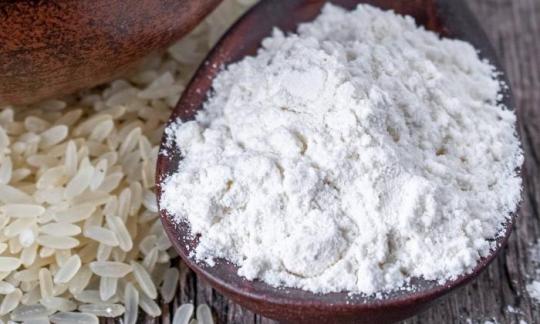

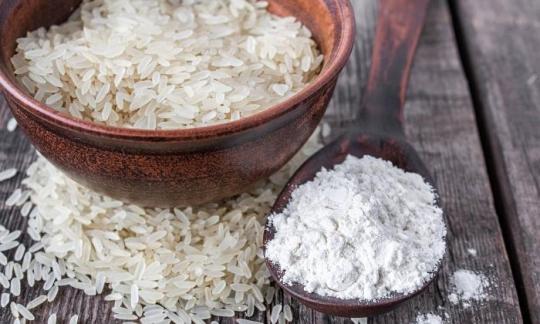

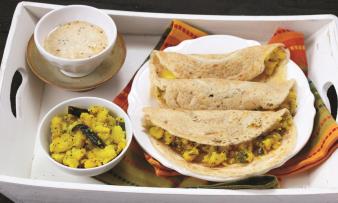
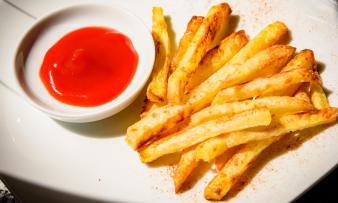
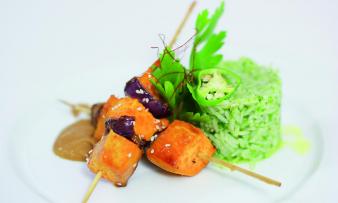





Comments